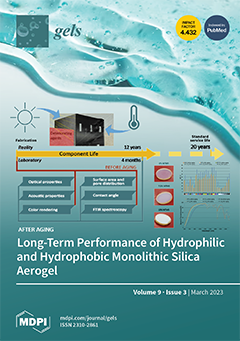Open AccessArticle
Anti-Inflammatory Effect and Toxicological Profile of Pulp Residue from the Caryocar Brasiliense, a Sustainable Raw Material
by
Julia Amanda Rodrigues Fracasso, Mariana Bittencourt Ibe, Luísa Taynara Silvério da Costa, Lucas Pires Guarnier, Amanda Martins Viel, Gustavo Reis de Brito, Mariana Conti Parron, Anderson Espírito do Santo Pereira, Giovana Sant’Ana Pegorin Brasil, Valdecir Farias Ximenes, Leonardo Fernandes Fraceto, Cassia Roberta Malacrida Mayer, João Tadeu Ribeiro-Paes, Fernando Yutaka de Ferreira, Natália Alves Zoppe and Lucinéia dos Santos
Cited by 3 | Viewed by 1930
Abstract
Caryocar brasiliense Cambess is a plant species typical of the Cerrado, a Brazilian biome. The fruit of this species is popularly known as pequi, and its oil is used in traditional medicine. However, an important factor hindering the use of pequi oil is
[...] Read more.
Caryocar brasiliense Cambess is a plant species typical of the Cerrado, a Brazilian biome. The fruit of this species is popularly known as pequi, and its oil is used in traditional medicine. However, an important factor hindering the use of pequi oil is its low yield when extracted from the pulp of this fruit. Therefore, in this study, with aim of developing a new herbal medicine, we an-alyzed the toxicity and anti-inflammatory activity of an extract of pequi pulp residue (EPPR), fol-lowing the mechanical extraction of the oil from its pulp. For this purpose, EPPR was prepared and encapsulated in chitosan. The nanoparticles were analyzed, and the cytotoxicity of the encapsu-lated EPPR was evaluated in vitro. After confirming the cytotoxicity of the encapsulated EPPR, the following evaluations were performed with non-encapsulated EPPR: in vitro anti-inflammatory activity, quantification of cytokines, and acute toxicity in vivo. Once the anti-inflammatory activity and absence of toxicity of EPPR were verified, a gel formulation of EPPR was developed for topical use and analyzed for its in vivo anti-inflammatory potential, ocular toxicity, and previous stability assessment. EPPR and the gel containing EPPR showed effective anti-inflammatory activity and lack of toxicity. The formulation was stable. Thus, a new herbal medicine with anti-inflammatory activity can be developed from discarded pequi residue.
Full article
►▼
Show Figures






